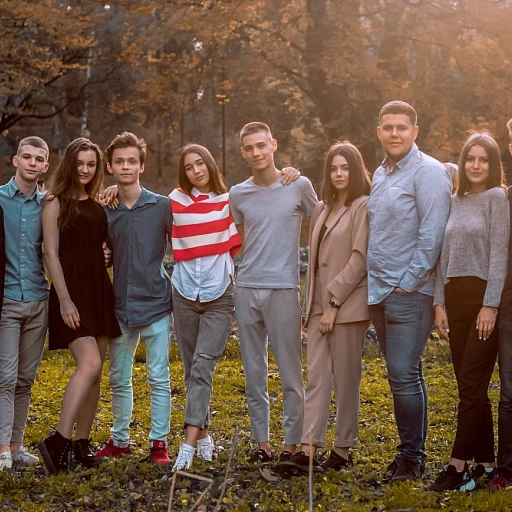
The Purpose of Team Building
The Core Objective of Strengthening the Group
Team building activities are crucial for fostering interpersonal relationships and enhancing collaboration within a work team. The primary aim of team building is to create a sense of unity and purpose among team members, helping them to function more effectively as a cohesive unit. A well-structured team building event serves as a catalyst for improved communication, heightened trust, and enhanced problem solving skills—all essential components of a high performing team. The purpose of these activities extends beyond mere entertainment or leisurely group events. Engaging in team building activities provides team members with an opportunity to interact with one another in a fun and relaxed setting, promoting genuine connections. This environment often gives way to deeper conversations and a better understanding of each other's work styles, strengths, and areas for development, fostering a culture of support and empathy. Moreover, team building not only aids in the direct development of soft skills such as leadership, communication, and cooperation but also plays a significant role in team bonding. By participating in a variety of activities—from structured problem-solving tasks to engaging team-based games—employees can build the trust necessary for effective team work and ultimately contribute to overall employee engagement. Given the impact of these activities on team dynamics and employee morale, it is vital to consider their effectiveness in fostering a team culture. Successful team building will lead to a more motivated, aligned, and high-functioning team ready to tackle challenges together, laying the groundwork for improved team performance and company culture. Through carefully planned team building events, organizations can pave the way for robust employee retention by creating an environment where team members feel valued and connected.Types of Team Building Activities
Diverse Approaches to Team Building
Team building activities can take various forms, each tailored to impact particular aspects of team dynamics and performance. The choice of activity often depends on the objectives of the organization and the current needs of the team.- Outdoor Challenges: Outdoor events like obstacle courses or adventure games foster fun interactions and physical engagement. They encourage team bonding, trust, and communication among team members, enhancing their collaborative skills.
- Workshops and Seminars: These activities focus on improving specific work-related skills such as communication, problem-solving, and leadership. Seminars provide team members with tools to work more effectively both individually and collectively.
- Social Events: Events like company picnics or holiday parties promote informal interactions. These social activities enhance employee engagement by providing a relaxed atmosphere where team members can connect on a personal level.
- Creative Collaborations: Activities like group painting or music sessions stimulate creativity, which can lead to innovative solutions at work. They encourage team development by allowing team members to think outside the box in a supportive and fun team environment.
- Problem-Solving Exercises: Scenarios such as escape rooms or puzzles are designed to improve teamwork by challenging teams to think critically under time constraints. They enhance team performance by nurturing effective problem-solving skills and trust among participants.
Factors Influencing the Duration of Team Building
Determining the Right Time Frame for Team Building
When planning team building activities, one crucial aspect to consider is the duration of these events. The time allocated can significantly influence their effectiveness and the overall experience for team members. Here are some factors to consider when determining how long your team building activities should last:
- Objective of the Activity: The purpose of the team building event will largely dictate its length. For example, activities focused on developing specific skills like communication or problem-solving may require more time than those aimed at simply fostering team bonding.
- Group Size: Larger groups might need extended time to ensure everyone can participate effectively. Conversely, smaller teams can often accomplish their goals in a shorter period.
- Type of Activity: Different activities naturally demand different time commitments. A complex challenge that involves strategic thinking might take longer than a simple icebreaker or fun team game.
- Employee Schedules: Consider the work schedules and personal commitments of your team members. Activities that are too long may disrupt work-life balance, leading to disengagement rather than increased employee engagement.
- Company Culture: Align the duration with your company culture. If your organization values swift, high-impact sessions, shorter, more frequent activities might be more suitable.
Ultimately, the key is to strike a balance that maximizes engagement without overwhelming participants. By carefully considering these factors, you can design team building events that are not only effective but also enjoyable, helping to foster trust and collaboration among team members. For more insights on how remote work impacts employee training and team development, you might find this resource helpful.
Impact of Team Building on Employee Retention
The Role of Team Building in Enhancing Employee Retention
Team building activities have a profound impact on employee retention by fostering a positive work environment. These activities encourage interactions among team members, improving communication and collaboration, which are critical components for a harmonious workplace. When teams engage in building activities, they often develop stronger bonds. Such activities encourage team members to collaborate and share ideas more openly, effectively enhancing trust and understanding among them. Group activities promote the development of essential skills including problem-solving and effective communication. As participants engage, they learn to rely on each other’s strengths, leading to a more cohesive team. A cohesive team is often better equipped to handle challenges—this increases team performance and ultimately boosts employee engagement. Building events offer employees a chance to see their colleagues in a different light, outside of the usual workplace setting. This exposure can help to break down barriers, allowing employees to connect on a more personal level, further solidifying their commitment to the team and the organization. Events that incorporate fun elements are particularly effective in this respect, as they encourage participation and foster a positive company culture. In addition to improved relationships, team building events encourage a sense of belonging and value within the organization. Employees who feel integral to the team and understand their contributions are appreciated, are more likely to stay committed to their roles. Hence, implementing consistent and thoughtful team building can significantly reduce turnover rates. As a result, organizations can maintain a high-performing team capable of achieving collective goals and sustaining long-term success.Balancing Frequency and Duration
Striking the Right Balance for Maximum Impact
Finding the right balance between frequency and duration of team building activities is critical to ensure they are both effective and beneficial for the team members involved. While team building events aim to foster better communication, trust, and teamwork among members, it's important to design activities that align with your team’s specific needs and company culture. Frequency and duration of team building activities can significantly impact their success. Holding too frequent or lengthy sessions may lead to diminished enthusiasm and engagement from employees. On the other hand, scarce opportunities for team bonding could limit their potential benefits. Here's what you should consider:- Purpose and Goals: Clearly understanding the primary objectives of each team building activity can help in determining the optimal duration and frequency. Are you focusing on enhancing problem solving skills, building trust, or simply allowing team members to have fun?
- Team Dynamics: Consider the size and composition of your work team. Larger teams might benefit more from frequent short activities, while smaller teams may appreciate more in-depth sessions for team development.
- Workload and Schedules: Recognizing the workload and schedule constraints of employees is vital to avoid creating additional stress. Integrating team building activities into the existing schedule or timing them during less busy periods can be more effective.
- Feedback and Flexibility: Gathering feedback from participants after a team building event can offer valuable insights into what works and what doesn’t. Being flexible in terms of adjusting the nature, timing, and frequency of activities based on feedback will be crucial.
Measuring Success in Team Building
Evaluating the Effectiveness of Team Building Activities
When it comes to team building activities, measuring success can sometimes feel like trying to catch smoke with your bare hands. Yet, understanding how effective these activities are is crucial for improving team performance and boosting employee engagement. Here's how you can measure the success of your team building events.
- Feedback from Participants: One of the most straightforward ways to gauge the success of a team building activity is to ask the participants. Surveys or feedback forms can help you understand what team members found valuable, fun, or even lacking. This can be a goldmine of information for refining future events.
- Observation of Team Dynamics: Post-activity, observe any changes in team dynamics. Are team members communicating more effectively? Is there a noticeable improvement in trust and collaboration? These are indicators that the activities have had a positive impact.
- Performance Metrics: While team building activities are not solely about improving work metrics, a boost in productivity or a decrease in conflicts can be telling signs of success. Monitor these metrics over time to see if there is a correlation with your team building efforts.
- Employee Retention Rates: As discussed earlier, team building activities can significantly impact employee retention. Keep an eye on turnover rates to see if there's a downward trend after implementing regular team building events.
- Long-term Engagement: Effective team building should lead to sustained engagement. Check if employees remain motivated and involved in their work long after the activities have ended.
Ultimately, the goal of team building is to foster a high-performing work team. By measuring the success of these activities, you can ensure they are effective and contributing positively to your company culture. Remember, the best team building activities are those that are enjoyable and leave a lasting impact on team members.






